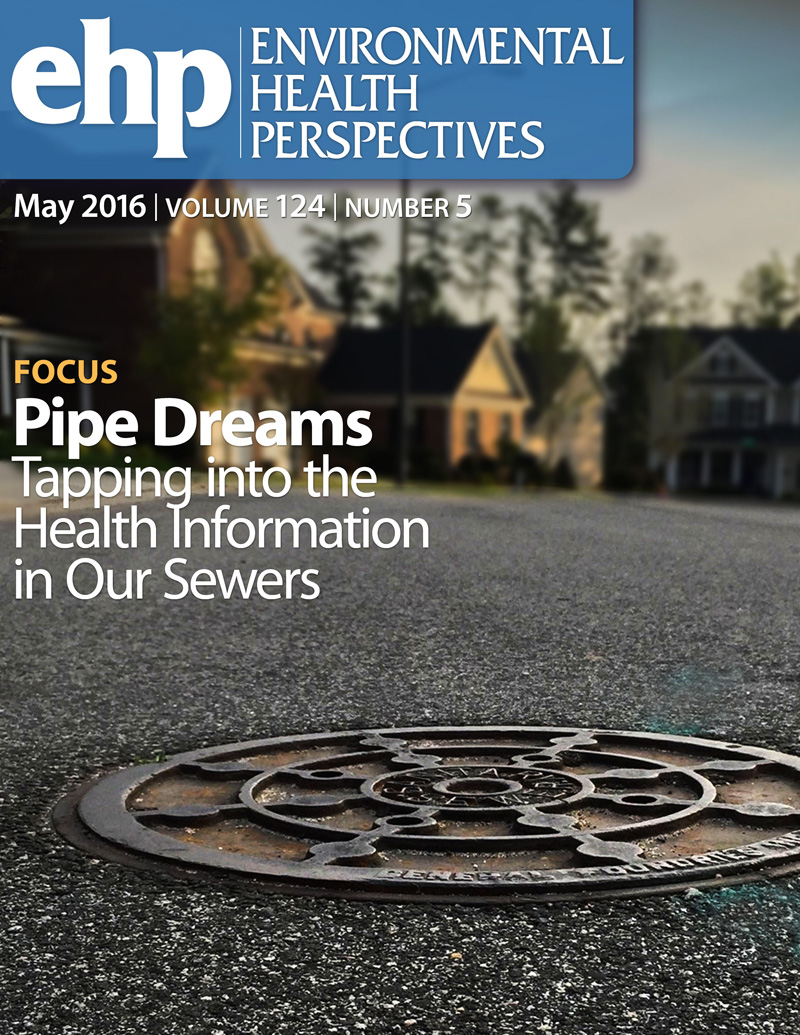A prospective exposome-based gene-environment interaction study on the effects of prenatal environmental exposure on fetal growth in the Shanghai Birth Cohort.
IF 9.8
1区 环境科学与生态学
Q1 ENVIRONMENTAL SCIENCES
引用次数: 0
Abstract
BACKGROUND Both environmental exposure and type 2 diabetes (T2D) genetic susceptibility affect fetal growth. However, most previous studies used single exposure rather than an exposome strategy to explore the association between environmental factors and fetal growth, and the interactions of environmental exposures with maternal and fetal genes were often overlooked. OBJECTIVES To explore the associations between a broad range of prenatal environmental factors and fetal growth and further evaluate the effect modification of maternal and fetal T2D genetic susceptibility on the identified exposures. METHODS From 1,933 mother-neonate pairs from the Shanghai Birth Cohort, we estimated the associations between 70 prenatal exposure measures (including outdoor environment, residential environment, chemical exposures, lifestyle factors, and psychosocial status) and fetal growth, measured by birth-weight-for-gestational-age z-score (WAZ). Single-exposure analysis, elastic net regression, sparse partial least squares regression, extreme gradient boosting, and random forest were applied jointly to screen for WAZ-associated exposures. Multivariable linear regression models were used to assess the interactions of WAZ-associated exposures with maternal and fetal T2D polygenetic risk score (PRS). RESULTS Sixteen prenatal exposures were associated with fetal growth, of which manganese, strontium, and residential greenspace showed a positive association while bisphenol A (BPA), 2,4-dihydroxy benzophenone (BP-1), ethyl 4-hydroxybenzoate (EtP), 4-hydroxybenzophenone (4-HBP), artificial light at night, noise, nitrogen dioxide, rubidium, thallium, silver, and humidity had a negative association. Temperature had an inverse U-shaped association with WAZ. The interactions of BPA and silver with maternal and fetal T2D PRS and rubidium with fetal T2D PRS were statistically significant, with more pronounced exposure effects in individuals with high T2D genetic risks. DISCUSSION Our study identified several prenatal environmental exposures within the outdoor environment, phenols, and metal(loid)s that were associated with fetal growth. Mother-neonate pairs with high T2D genetic susceptibility were particularly vulnerable to the environmental insults. https://doi.org/10.1289/EHP15902.基于暴露体的基因-环境相互作用研究产前环境暴露对上海出生队列胎儿生长的影响。
环境暴露和2型糖尿病(T2D)遗传易感性都会影响胎儿的生长。然而,以往的研究大多采用单一暴露而非暴露策略来探讨环境因素与胎儿生长之间的关系,环境暴露与母体和胎儿基因的相互作用往往被忽视。目的探讨多种产前环境因素与胎儿生长发育的关系,并进一步评价母体和胎儿T2D遗传易感性的改变对确定暴露因素的影响。方法从上海出生队列的1933对母亲-新生儿中,我们估计了70个产前暴露措施(包括室外环境、居住环境、化学物质暴露、生活方式因素和心理社会状况)与胎儿生长之间的关系,通过出生体重胎龄z评分(WAZ)来测量。单一暴露分析、弹性网回归、稀疏偏最小二乘回归、极端梯度增强和随机森林联合应用于筛选与waz相关的暴露。使用多变量线性回归模型来评估与waz相关的暴露与母体和胎儿T2D多遗传风险评分(PRS)的相互作用。结果16种产前暴露与胎儿生长有关,其中锰、锶和居住绿地与胎儿生长呈正相关,双酚a (BPA)、2,4-二羟基二苯甲酮(BP-1)、4-羟基苯甲酸乙酯(EtP)、4-羟基二苯甲酮(4-HBP)、夜间人造光、噪声、二氧化氮、铷、铊、银和湿度与胎儿生长负相关。温度与WAZ呈负u型相关。双酚a和银与母体和胎儿T2D PRS、铷与胎儿T2D PRS的相互作用具有统计学意义,在T2D遗传风险高的个体中,接触效应更为明显。讨论:我们的研究确定了几种产前环境暴露,包括室外环境、酚类物质和金属(类)物质,这些都与胎儿生长有关。具有高T2D遗传易感性的母婴对特别容易受到环境的损害。https://doi.org/10.1289/EHP15902。
本文章由计算机程序翻译,如有差异,请以英文原文为准。
求助全文
约1分钟内获得全文
求助全文
来源期刊

Environmental Health Perspectives
环境科学-公共卫生、环境卫生与职业卫生
CiteScore
14.40
自引率
2.90%
发文量
388
审稿时长
6 months
期刊介绍:
Environmental Health Perspectives (EHP) is a monthly peer-reviewed journal supported by the National Institute of Environmental Health Sciences, part of the National Institutes of Health under the U.S. Department of Health and Human Services. Its mission is to facilitate discussions on the connections between the environment and human health by publishing top-notch research and news. EHP ranks third in Public, Environmental, and Occupational Health, fourth in Toxicology, and fifth in Environmental Sciences.
 求助内容:
求助内容: 应助结果提醒方式:
应助结果提醒方式:


